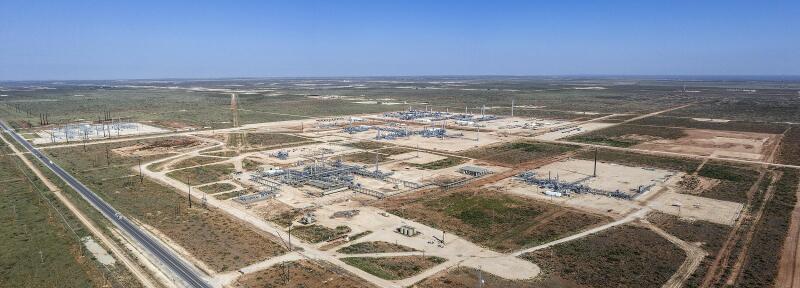Dallas-based Lucid Energy announced today that it has cleared a major regulatory hurdle in building what it says will be the largest carbon capture and storage (CCS) site in the Permian Basin.
The plan not only reflects the growing impetus for such projects but offers a look at how they can be built into existing oil and gas developments. And though the region is home to some of the world’s largest CO2 enhanced oil recovery projects, CCS is distinct in that it does not involve the production of hydrocarbons.
The privately owned gas-processing firm was given the green light by the US Environmental Protection Agency (EPA), which regulates injection wells used for disposal or storage.
In its decision, the EPA noted that Lucid will have a total injection capacity of around 500,000 mtpa, which translates to 26 MMscf/D of gas. However, Lucid appears to be planning an initial injection rate that equates to about half of this approved upper limit.
This is according to the company’s application that was submitted to the EPA. It includes many other details about the proposed CCS project that is expected to operate for 30 years.
The plan calls for CO2 to be captured from Lucid’s Red Hills gas-processing facility in Lea County, New Mexico, and injected into two wells: one existing injector and one proposed but not yet drilled.
According to Lucid, a total of 13 MMscf/D of gas will be split between these two wells, which upon completion of the second will be offset by about 200 ft.
Located in one of the Permian’s chief sub-basins, the Delaware Basin, the Red Hills facility comprises five individual plants with a total capacity of 920 MMcf/D. Lucid notes that it is the largest gas-processing site in the Permian.
One of the midstream operator's next steps is to obtain approval from the US Internal Revenue Service for the Section 45Q tax credit which provides companies with a credit of up to $50 per metric ton for the permanent geologic storage of CO2.
“This strategy has proven beneficial for all stakeholders, as Lucid currently removes more CO2 from Permian Basin shale production than any other midstream operator. In turn, Lucid is the perfect candidate to develop the largest CCS project in the Permian Basin by simply modifying and expanding our existing operations,” Mike Latchem, CEO of Lucid, said in a statement.
From Sour Gas to CCS
Lucid will source its CO2 from the plant’s gas- sweetener units that are used to treat the sour gas flowing in from the region’s oil and gas projects.
The sweeteners rely on the acid-gas-treating method, which is commonly used to remove H2S, CO2 and other trace gases so that the natural gas can meet the specs of sales pipelines. The production of associated sour gas is common across the Permian and represents a corrosive hazard for pipelines.
As such, the gas mix being injected as part of the Red Hills CCS project will not be a pure stream of CO2. Lucid anticipates that the mix will comprise 17% H2S and 83% CO2.
Once in the subsurface, the operator expects both the H2S and CO2 will dissolve into the brine water that is present in two of the main target formations.
Additionally, Lucid may potentially receive CO2 via containers, which implies that it is willing to take on the waste gas from capture projects outside of its facility’s footprint.
The application for the Red Hills CCS project outlines the risk factors of potential CO2 and H2S leakage, along with Lucid’s plans to avoid such escapes. Among the risks considered and addressed include existing wellbores in the region, fault lines, and the potential for surface leaks.
The existing injection well has a total depth of 6,650 ft and penetrates into the upper part of rock layer called the Cherry Canyon Formation. The formation is characterized by high-porosity sandstones where porosities are in some cases greater than 22%. This is more than twice the figure Lucid says it needs to achieve adequate injection.
Above the Cherry Canyon is a formation that consists of another sandstone that is described as a 900-ft thick conglomerated layer of tight limestone, shale, and calcite-siltstone with porosities as low as 4%. Lucid considers this to be “consistent with an effective seal on the injection zone.”
The second and yet-to-be drilled well is planned to reach a total depth of around 17,600 ft. Its target formation is dominated by Devonian rocks and is a favorite target for saltwater disposal wells (SWDs) in the Delaware. And though SWDs have fallen under scrutiny in neighboring Texas for causing induced seismicity, Lucid considers seismicity to be low risk since natural or induced earthquakes have yet to be recorded in the project area.
This Devonian horizon includes dolomite and dolomitic limestones that have moderate to high porosity. Lucid also believes there may be secondary porosity in this layer due to the likelihood of cavities and large fractures that were formed as a result of karst events.
These dissolved areas of rock “can be substantial enough to provide additional permeability that is not readily apparent on well logs,” Lucid said in its application to the EPA. The firm also noted that this deeper target “has excellent caprocks above, below, and between the individual porous carbonate units.”


